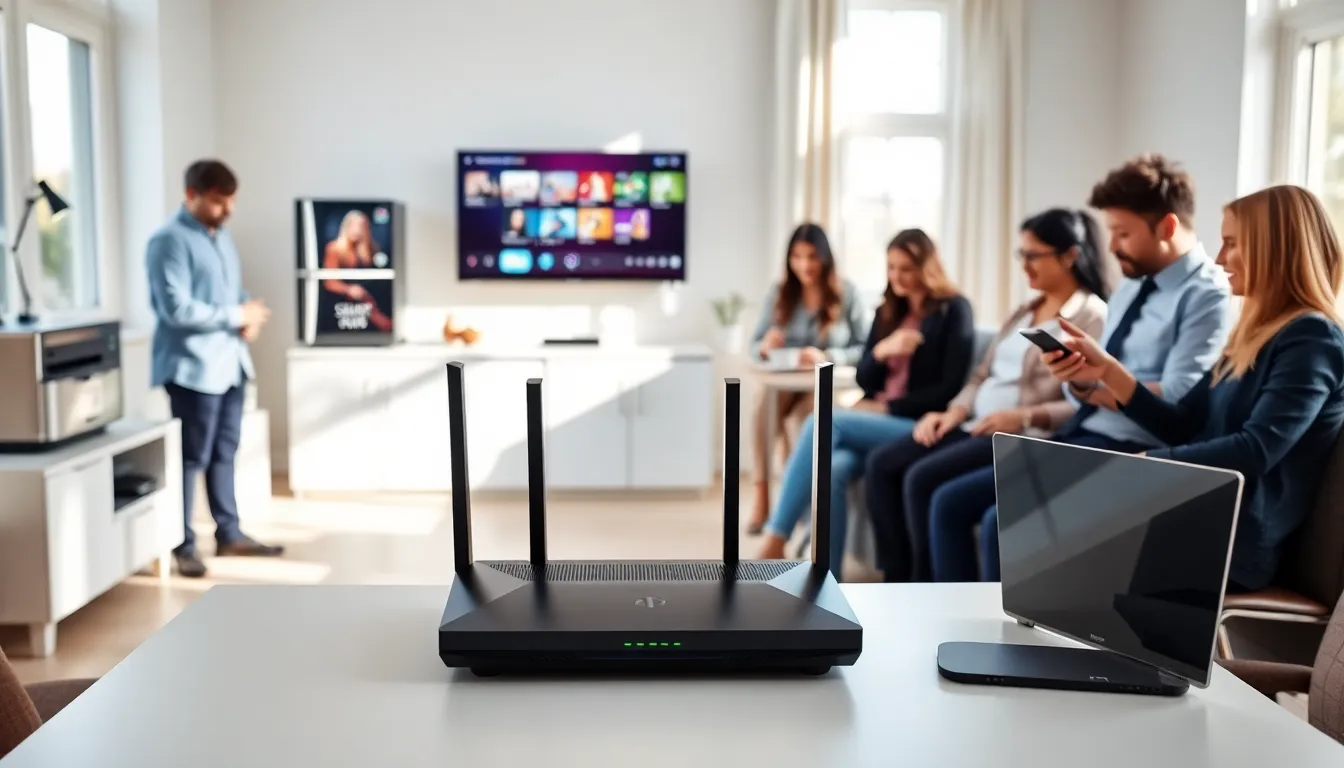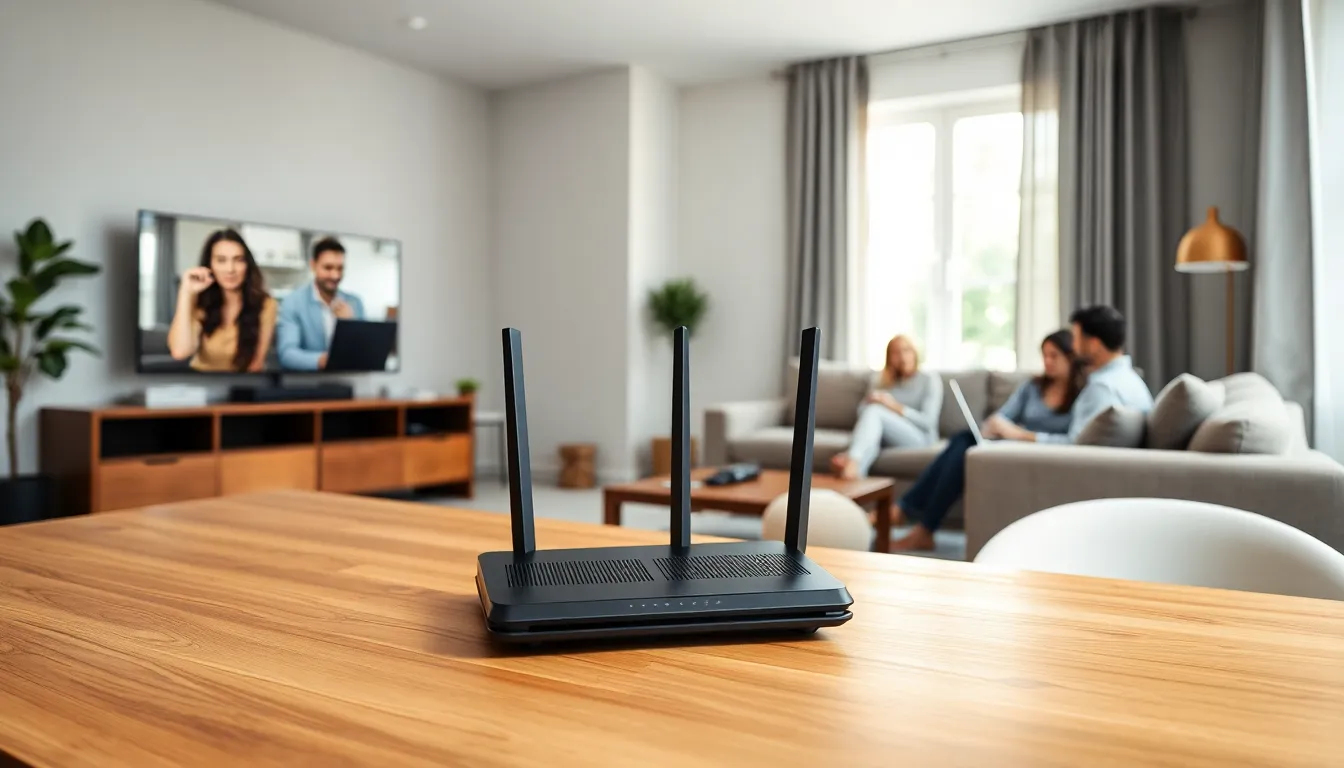Table of Contents
ToggleImagine your home, it’s a lively hub of activity. Family members streaming Netflix in one room, while someone else is video calling friends in another. All this is possible through effective home networking. As technology infiltrates our lives, understanding how to manage these connections becomes essential. Solutions range from DIY setups to professional installations. Here’s your guide to navigate the maze of home networking services, ensuring you enjoy seamless connectivity with a touch of humor along the way.
Understanding Home Networking

Home networking essentially refers to connecting different devices within a home so they can communicate and share resources. Think about it: your computer, printer, smart TV, and even that quirky smart fridge, each can link together. This collaboration allows users to share files, stream media, or access the internet with ease. The heart of this system is the router, which acts like a traffic cop, directing data where it needs to go.
Once you understand the components, the magic happens. Devices can communicate seamlessly, making remote work, online gaming, or binge-watching possible without a hitch. Yet, navigating this intricate web can seem daunting: but, kickstarting your home networking journey isn’t as complicated as it sounds.
Types of Home Networking Services
Home networking services typically fall into a few categories:
- Wired Networking: These setups use Ethernet cables to create super-fast and reliable connections. Perfect for gamers or anyone who can’t afford buffering.
- Wireless Networking: Wi-Fi reigns supreme here. It’s flexible, allowing devices to connect without cables. Excellent for homes where mobility matters.
- Mesh Networking: This innovative technology uses multiple nodes to blanket a larger area in Wi-Fi, solving the dead zone dilemma many households experience. Say goodbye to weak signals.
- Network Security Services: With the rise in cyber threats, securing your home network is paramount. Services might involve firewalls, VPNs, and monitoring tools.
- Networking Maintenance Services: Sometimes the gremlins come out, and your network needs love. These services help maintain, troubleshoot, and optimize home networks for peak performance.
Each type caters to distinct needs, making it crucial to identify what works for your lifestyle.
Choosing the Right Home Networking Equipment
Selecting the right equipment can make or break your home networking experience. With a plethora of options on the market, confusion can reign supreme. Here are key items to consider:
- Router: Look for routers that support the latest Wi-Fi standards, like Wi-Fi 6, which promises faster speeds and better performance.
- Modem: Make sure your modem is compatible with your Internet Service Provider (ISP). Few things are more annoying than a disconnect when you’re mid-gaming.
- Switches and Access Points: These can enhance your network. Switches expand wired networks, while access points extend Wi-Fi coverage.
- Cables: Don’t underestimate quality cables. High-quality Ethernet cables ensure data travels quickly across your setup.
Understand the needs of your household. Large families might require robust solutions, whereas singles or couples might suffice with basic equipment.
Installation and Configuration of Home Networks
Once you’ve gathered your equipment, diving into installation can feel like staring at a puzzle without the picture on the box. Here’s a simple roadmap:
- Positioning Your Router: Place it centrally in your home for optimal coverage. Avoid hiding it in a closet: routers need room to breathe.
- Connecting Devices: Start hooking everything up. For wired networks, use your Ethernet cables. For wireless, follow the prompts in your router’s setup.
- Configuring Settings: Access the router’s admin panel, usually through a web browser. Change the default admin passwords and set up your Wi-Fi name and password. Security is crucial here.
- Testing Connectivity: Before settling in with your favorite show, confirm your devices connect without difficulty. A quick speed test can reveal connection quality.
If uncertainty strikes, considering hiring a professional might save you time and headaches.
Common Issues and Troubleshooting Tips
Even the best networks aren’t immune to hiccups. Here are familiar issues and practical solutions:
- Slow Internet: First, reboot your router. Seriously, just turn it off and on. Many times, this simple fix boosts performance.
- Wi-Fi Dead Zones: If certain rooms feel like Wi-Fi black holes, consider a mesh network or additional access points to fill in the gaps.
- Overheating Routers: If your router’s working overtime and heating up, it might be time to give it a break or relocate it to a cooler spot.
- Security Breaches: Ensure that your Wi-Fi password is strong. Update your firmware regularly to fortify your defenses against intruders.
Future Trends in Home Networking Services
The world of home networking is ever-evolving. Looking ahead, several trends are shaping our connectivity experiences:
- Increased Automation: Smart homes are on the rise. With devices automatically connecting and configuring, your network will efficiently handle it all without manual intervention.
- 5G and Beyond: Emerging technologies like 5G will revolutionize home internet, providing blistering speeds and low latency. The possibilities are exciting.
- AI in Networking: Artificial Intelligence will optimize network management. Expect smart systems that learn and adapt to your usage patterns, enhancing performance.
- Enhanced Security: With cyber threats escalating, next-gen security measures will likely become standard, protecting networks from unauthorized access.
Keeping abreast of these trends will help homeowners adapt optimally.







